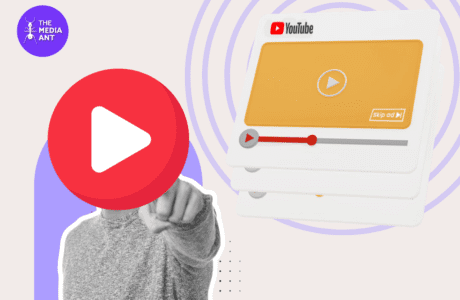In the dynamic digital arena where the adrenaline of sports meets the pulsating beat of social media, a groundbreaking transformation is reshaping the landscape of sports marketing. Gone are the days when promotions were confined to billboards and television screens.
Today, the game is played on a digital field where platforms like Facebook, Twitter, Instagram, and LinkedIn have become the new stadiums, echoing with the cheers of engaged audiences worldwide.This paradigm shift signifies more than just a change in marketing tactics; it’s a revolution in how sports brands connect, engage, and build lasting relationships with their fans.
As we embark on this exploration of the symbiotic relationship between sports and social media, we’ll unravel the strategies employed by brands to leverage these platforms effectively. From crafting compelling narratives that resonate with fans to the art of real-time engagement during nail-biting matches, each facet contributes to the larger-than-life spectacle that is sports marketing in the digital age.
The Social Media Revolution
The rise of social media is more than a mere technological evolution; it’s a revolution that has redefined how sports grow, engage, and extend their influence beyond the traditional confines of arenas and television screens. In this digital epoch, social media has become the dynamic catalyst that amplifies the narratives of sporting events, creating an immersive experience that transcends geographical boundaries.
As sports enthusiasts increasingly turn to platforms like Facebook, Twitter, Instagram, and TikTok for real-time updates, behind-the-scenes glimpses, and interactive engagement, the growth of sports is no longer solely measured by on-field triumphs. The number of followers, trending hashtags, and viral moments contribute to a new kind of scoreboard, one that gauges the pulse of a global audience connected by the passion for sports.
This revolution has democratized the sports experience, empowering fans to be active contributors to the narrative. Every share, like, and comment is a testament to the communal nature of the sports conversation on social media, where fans are no longer mere spectators but active participants in the ongoing dialogue.
Leveraging Social Media Platforms for Sports Marketing
In the era of social media, sports brands find themselves not only as competitors on the field but as storytellers in a digital realm that hungers for compelling narratives. The shift from traditional advertising to a more immersive, narrative-driven approach has become pivotal in cultivating a brand identity that resonates with audiences on a deeper level.
1. The Power of Storytelling
Storytelling has long been recognized as a potent tool in human communication, and its application in sports branding is no exception. Social media platforms provide an expansive canvas where sports brands can weave narratives that transcend the mere showcasing of their products or achievements. Instead, they delve into the ethos, values, and unique journeys that define the brand.
2. Shaping Identity through Narratives
Building a brand narrative involves more than recounting victories and accolades; it’s about humanizing the brand. Through carefully crafted stories, sports brands can articulate their mission, values, and the personalities behind the athletes. Whether it’s the tale of an underdog rising against all odds or a team’s commitment to community service, these narratives contribute to a brand identity that extends beyond the game itself.
3. Emotional Connection with Audiences
One of the primary strengths of narrative-driven branding is its ability to evoke emotions. By sharing stories that resonate with the human experience — struggles, triumphs, and moments of vulnerability — sports brands forge emotional connections with their audiences. Fans don’t just support a team; they become part of a narrative, sharing in the highs and lows that define the journey.
4. Successful Examples in Sports Branding
Numerous sports brands have successfully embraced storytelling as a cornerstone of their marketing strategy. Nike’s “Just Do It” campaign is a prime example, transcending a mere tagline to become a global mantra for perseverance. Another standout is the storytelling prowess of the NBA, where personal narratives of players are woven into the league’s overarching story, creating a tapestry of shared experiences.
5. Social Media as the Storytelling Platform
Social media platforms serve as the stage for these narratives to unfold in real-time. Whether through carefully curated Instagram posts, emotive tweets, or captivating Facebook videos, sports brands leverage the immediacy and accessibility of social media to invite audiences into their stories.
6. Engaging Fans as Co-Creators
The interactive nature of social media allows fans to become active participants in the storytelling process. From hashtag campaigns to user-generated content, sports brands invite fans to contribute to the narrative, fostering a sense of community and shared ownership in the brand’s story.
Influencer Partnerships: Paving the Way for Sports Marketing Success
In the realm of sports marketing, where authenticity and relatability reign supreme, social media influencers have emerged as game-changers. These digital tastemakers, with their dedicated follower base, have become powerful allies for sports brands seeking to expand their reach and resonate with diverse audiences. Brands must explore the impact of influencer collaborations in sports marketing, delving into the strategies employed and showcasing successful partnerships that have left an indelible mark.
1. The Rise of Social Media Influencers in Sports Marketing
Social media influencers are not just content creators; they are trusted voices that hold sway over their followers’ opinions and choices. In the sports marketing arena, influencers bring a unique blend of passion, expertise, and a personal touch that traditional advertising often struggles to achieve. The symbiotic relationship between influencers and sports brands allows for a more organic and genuine connection with the audience.
2. Strategies Employed in Influencer Partnerships
A critical aspect that must be explored is the strategic approach that can be taken by sports brands in selecting influencers. It means how aligning the influencer’s niche, values, and audience with the brand’s identity ensures a seamless integration that feels authentic to followers. Additionally, brands must also think upon the various collaboration formats, from sponsored posts and product placements to more immersive experiences like behind-the-scenes access.
3. Showcasing Successful Partnerships
The heart of sports advertising with influencers lies in showcasing success stories – instances where influencer partnerships have yielded significant outcomes for sports brands. These could range from increased brand awareness and engagement to measurable boosts in sales or event attendance. By highlighting these achievements, the brands can not only celebrate the effectiveness of influencer collaborations but also provide valuable insights for brands contemplating such partnerships.
4. Authenticity as the Driving Force
Central to the analysis is the concept of authenticity. Influencers are successful because they bring an authentic voice to their content, and when this authenticity aligns with the values of a sports brand, the impact is profound. Brands must explore how influencer partnerships contribute to a brand’s authenticity, fostering a deeper connection with the audience.
The Future of Influencer Collaborations in Sports Marketing
As we navigate the dynamic landscape of sports marketing, one trend emerges with resounding significance—the evolution and future trajectory of influencer collaborations. Influencers, once seen as mere endorsers, are transforming into strategic partners, reshaping the narrative of sports brands in the digital age.
Looking ahead, influencer collaborations in sports marketing are poised to become even more integral to brand strategies. One key aspect of this evolution is the increasing emphasis on micro-influencers. These individuals, with smaller but highly engaged followings, offer a more authentic connection with niche audiences. In the future, sports brands are likely to diversify their collaborations, tapping into a network of micro-influencers to foster a sense of community and hyper-target specific demographics.
Platform-Specific Strategies
In the ever-evolving landscape of social media, each platform serves as a unique arena with its own set of rules and opportunities. Sports marketing, keenly attuned to the nuances of audience engagement, embraces these platforms strategically. This section explores platform-specific strategies, dissecting how sports brands tailor their approaches to Facebook, Twitter, Instagram, TikTok, and LinkedIn.
1. Facebook: The All-Inclusive Arena
Facebook’s sprawling user base and versatile features make it an invaluable tool in the sports marketing playbook. Brands leverage engaging content formats, including videos, images, and articles, to connect with diverse audiences. Analytics tools on Facebook enable brands to measure reach, engagement, and demographics, informing future strategies. Successful engagement tactics often involve interactive polls, behind-the-scenes content, and fan-centric discussions, fostering a sense of community.
2. Twitter: Real-time Conversations
Twitter’s real-time nature positions it as the go-to platform for live sports discussions. Hashtags play a pivotal role, serving as virtual arenas where fans unite during events. Sports brands leverage trending hashtags to increase visibility and engage in real-time conversations. Live-tweeting, sharing highlights, and participating in fan polls contribute to the dynamic, fast-paced nature of sports discussions on Twitter.
3. Instagram: Visual Storytelling
Instagram’s visual-centric nature aligns seamlessly with the captivating visuals inherent in sports. Sports marketing on Instagram goes beyond match highlights, delving into the realm of visual storytelling. Successful campaigns often incorporate visually stunning images, user-generated content, and immersive Instagram Stories. The platform’s Explore feature and IGTV provide additional avenues for brands to showcase content and reach wider audiences.
4. TikTok: The New Frontier
TikTok’s explosive growth has made it a frontier for sports marketing innovation. The platform’s short-form videos lend themselves to creative campaigns that capture attention swiftly. Sports brands leverage trends, challenges, and user-generated content to connect with a younger demographic. Behind-the-scenes glimpses, athlete takeovers, and challenges related to sports events amplify engagement on TikTok.
5. LinkedIn: B2B Opportunities
LinkedIn’s professional network introduces a B2B dimension to sports marketing. Brands leverage the platform for strategic partnerships, sponsorships, and collaborations with other businesses. Thought leadership content, such as industry insights and behind-the-scenes looks at the business side of sports, resonates well on LinkedIn. This platform becomes a space where sports organizations showcase their corporate responsibility initiatives and network with other businesses in the industry.
Measuring Success
Utilizing social media platforms for sports advertising presents a unique advantage in quantifying and measuring the success of campaigns with unparalleled ease. The built-in analytics tools provided by platforms like Facebook, Twitter, Instagram, and others offer comprehensive insights into various performance metrics, allowing advertisers to gauge the effectiveness of their strategies.
Engagement metrics such as likes, shares, comments, and retweets provide a real-time reflection of audience interaction, indicating the resonance of the content. Additionally, platforms offer detailed demographic data, enabling advertisers to understand the composition of their audience and tailor future campaigns accordingly.
Click-through rates (CTRs) and conversion tracking further contribute to the measurable success of campaigns, providing a tangible link between social media engagement and desired outcomes. The immediacy of these analytics allows for agile decision-making, enabling advertisers to refine their approach dynamically during the course of a campaign.
Moreover, the transparency and accessibility of social media analytics empower sports advertisers to not only assess the impact of their efforts but also iterate and optimize strategies swiftly, ensuring a data-driven approach to success in the ever-evolving landscape of sports advertising.
Future Trends
The future of sports marketing on social media platforms is poised to unfold along several dynamic trends, reshaping the way brands engage with audiences and leveraging the evolving landscape of digital interaction.
1. Virtual and Augmented Reality Integration:
The integration of virtual reality (VR) and augmented reality (AR) technologies will revolutionize the sports marketing experience. Fans can expect immersive content, such as virtual stadium tours, AR-enhanced merchandise try-ons, and interactive 360-degree views of live events. This trend not only enhances fan engagement but also provides innovative opportunities for brands to showcase products and experiences.
2. Rise of Niche Platforms:
While established platforms like Facebook and Instagram will continue to play a significant role, the rise of niche platforms tailored to specific interests or demographics will gain prominence. These platforms offer a more targeted approach, allowing brands to connect with highly engaged audiences. Sports marketers will explore platforms that cater to exclusive sports content, fostering deeper connections with niche fan communities.
3. Continued Emphasis on Influencer Marketing:
Influencer collaborations will evolve further, with an increased focus on authenticity, diversity, and micro-influencers. Brands will strategically partner with influencers who align not only with their target audience but also with the values and ethos of the sports industry. Authentic storytelling and relatable content will be central, creating deeper connections between influencers, brands, and fans.
4. Interactive and Gamified Content:
Sports marketing will embrace more interactive and gamified content to enhance fan participation. From live polls during games to virtual challenges and quizzes, brands will seek to transform passive spectators into active participants. Gamification not only boosts engagement but also fosters a sense of community among fans.
5. Ephemeral Content and Stories Dominance:
The prevalence of ephemeral content, such as Stories on platforms like Instagram and Snapchat, will continue to rise. Sports marketers will leverage the temporary and authentic nature of Stories to provide behind-the-scenes glimpses, real-time updates, and exclusive content, creating a sense of urgency and FOMO (fear of missing out) among followers.
6. Data-Driven Personalization:
Advancements in data analytics will enable sports marketers to deliver highly personalized content tailored to individual preferences. Machine learning algorithms will analyze user behavior, allowing brands to predict and cater to fan interests. Personalized experiences, offers, and recommendations will become integral to fostering strong and lasting connections.
Conclusion
Sports marketers will need to remain agile, embracing innovation, and staying attuned to the ever-evolving expectations of digital-savvy sports enthusiasts. The future of sports marketing on social media promises a dynamic and immersive journey, where creativity, technology, and authentic engagement converge to shape the next chapter in the industry’s narrative.
By peering into the future, discussing the evolving landscape of influencer marketing in the sports industry. It touches upon emerging trends and potential shifts in strategy, offering readers a glimpse into what lies ahead for this dynamic and influential partnership.
FAQs on Social Media Platforms for Sports Marketing
Which social media platforms are best for sports marketing?
Each platform has its own strengths, but popular choices for sports marketing include Instagram, Twitter, Facebook, YouTube, and Instagram. The choice depends on the target audience and the type of content you want to share.
What strategies work best on Twitter for sports marketing?
Twitter is excellent for real-time updates and conversations. You can engage with fans, share game highlights, provide live updates during matches, and participate in trending topics using relevant hashtags.
How do you leverage social media for marketing?
Leverage social media for marketing by creating engaging content tailored to your audience, utilizing multimedia formats, engaging with followers, leveraging influencer partnerships, tracking metrics to refine strategies, and staying abreast of trends to maintain relevance and maximize reach.
What are the benefits of leveraging social media?
Benefits of leveraging social media include reaching a vast audience, enhancing brand visibility and awareness, fostering direct engagement with customers, facilitating targeted advertising, gaining valuable insights through analytics, and staying competitive by adapting to evolving consumer trends efficiently.





